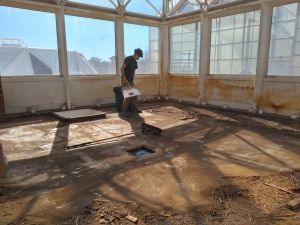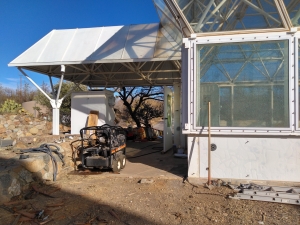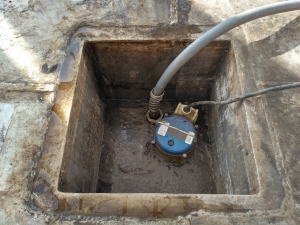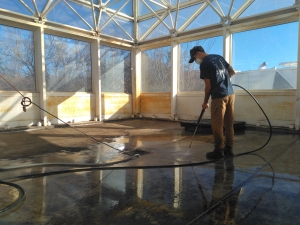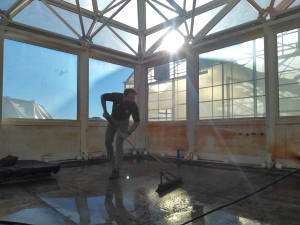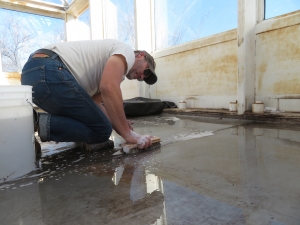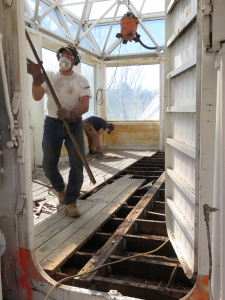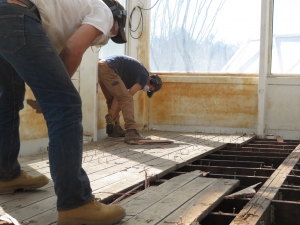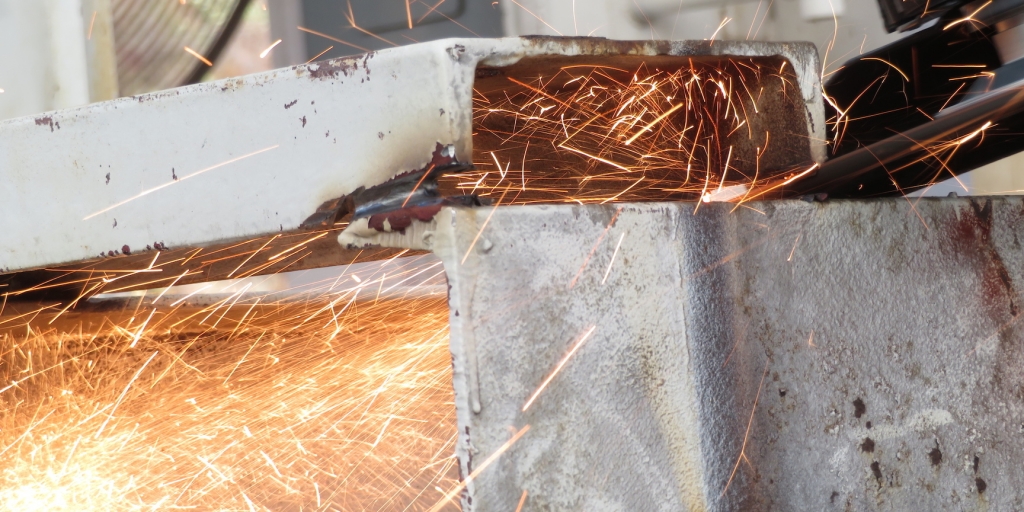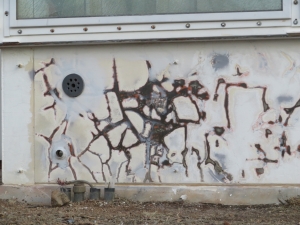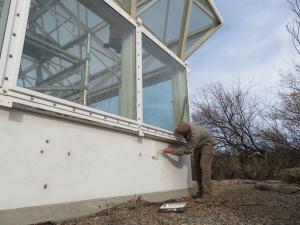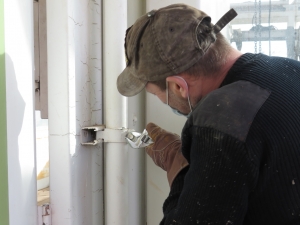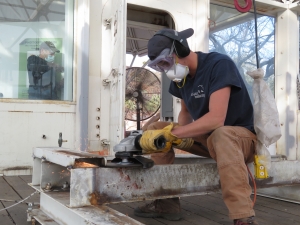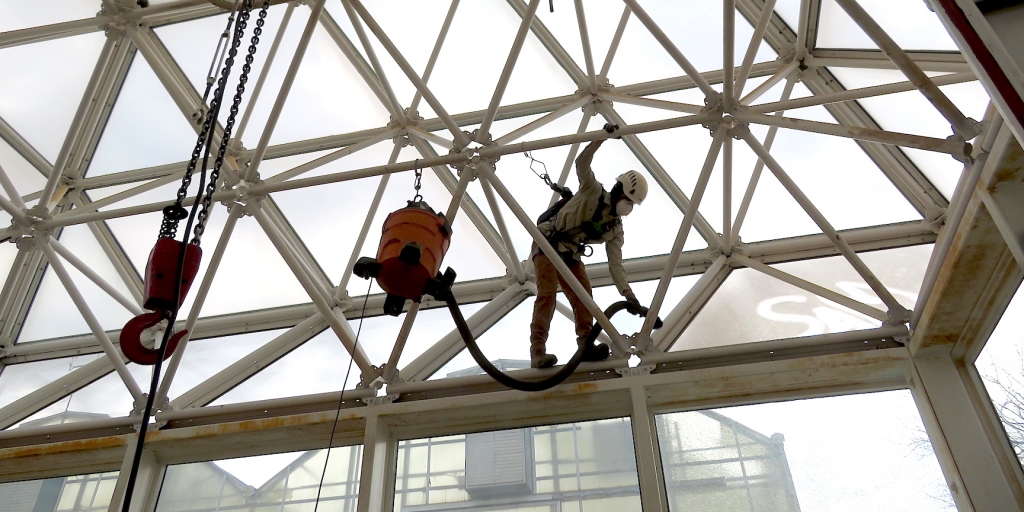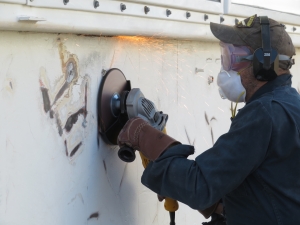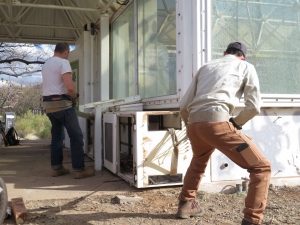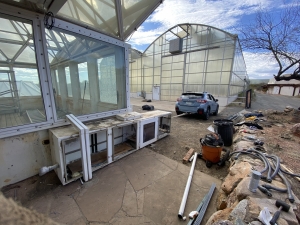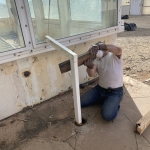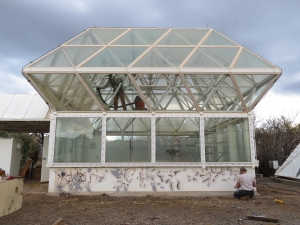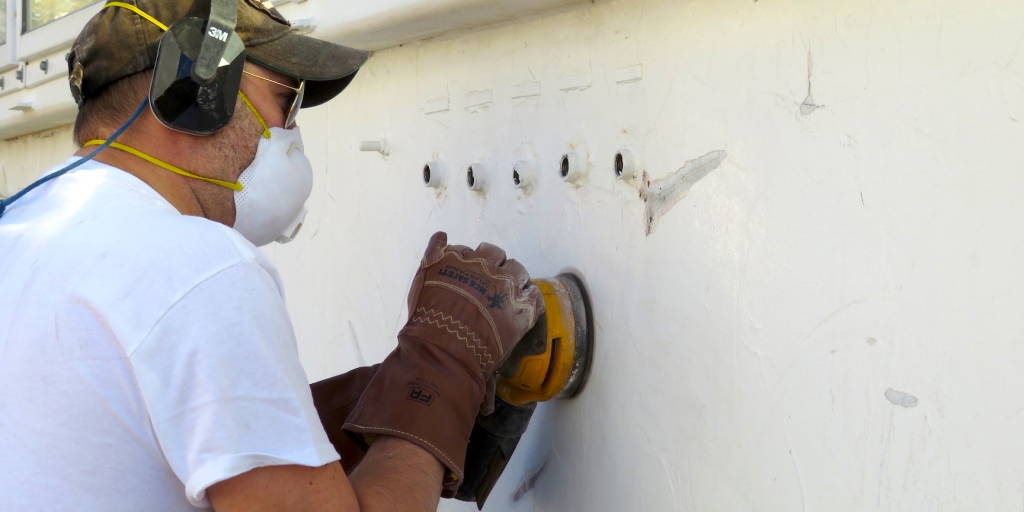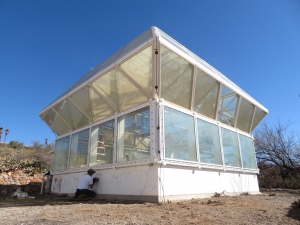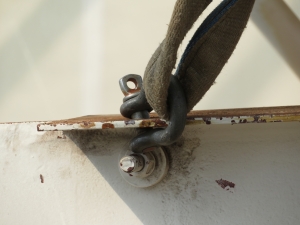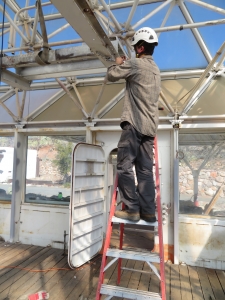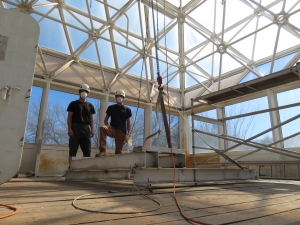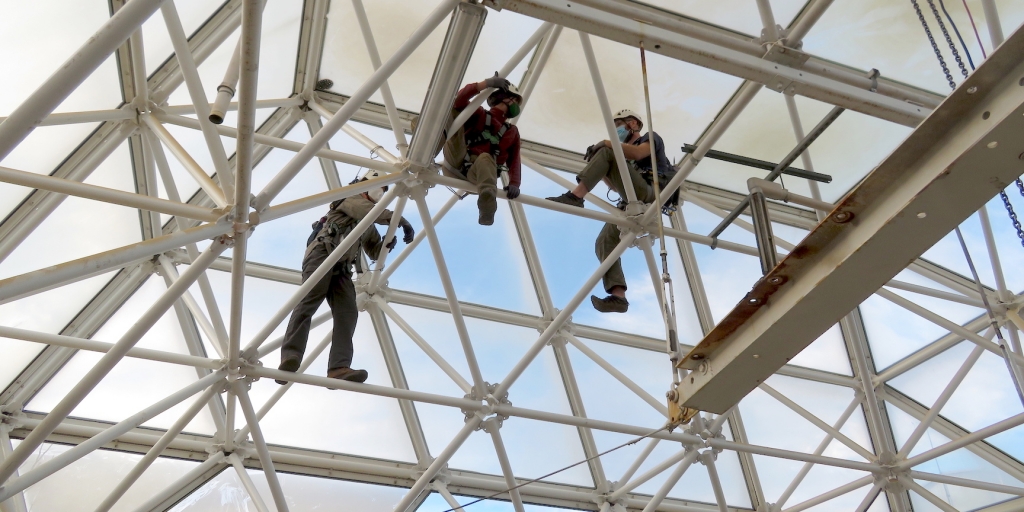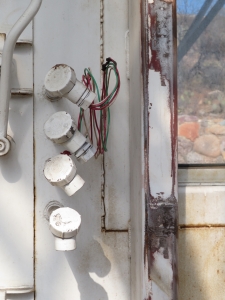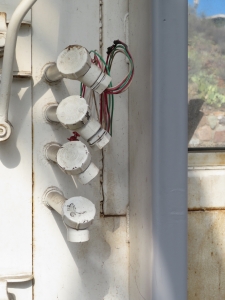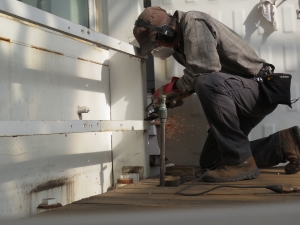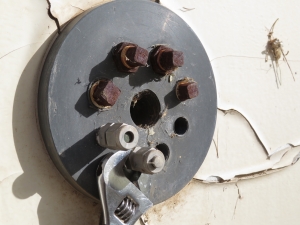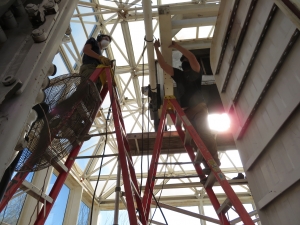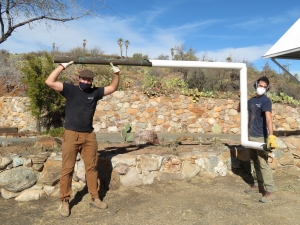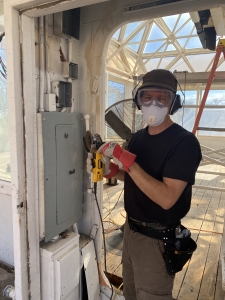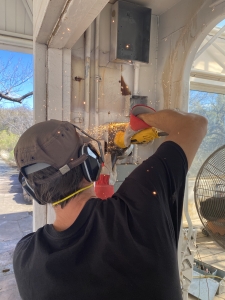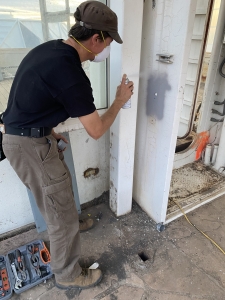SAM Construction – CO2 Scrubber from Paragon SDC
After a week break from construction, Kai Staats visited Paragon Space Development Corporation, a partner in SAM design and implementation. CEO and President Grant Anderson has given SAM two CO2 scrubbers: one to experiment with, the other the foundation for what will operate in the living quarters to maintain safe levels of carbon dioxide. Trent Tresch and Kai Staats are conducting research into the most practical and energy efficient means to recycle soda lime such that the adsorption beds will be rotated on a daily basis when a full four crew members are in place.


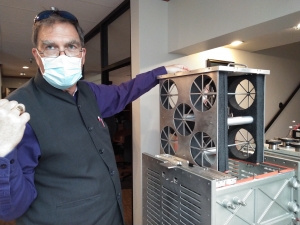
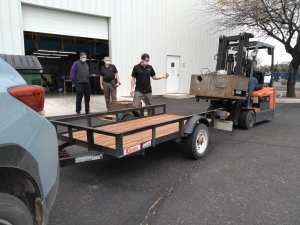
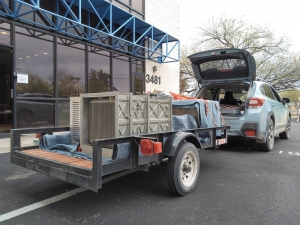
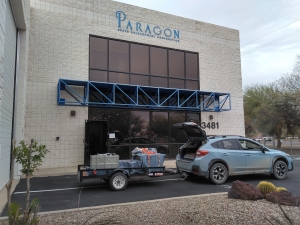
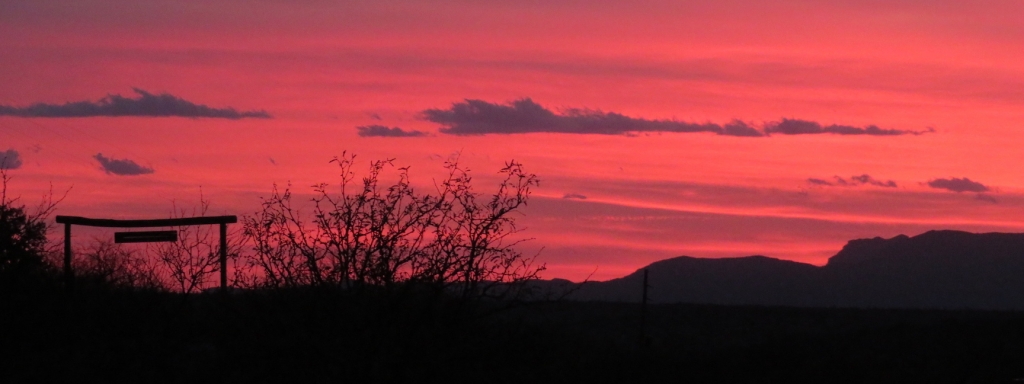 Six weeks have come and gone as though they were just a few days and at the same time a full year in the renovation of the Test Module at Biosphere 2 (B2). The first days were completely overwhelming, Trent and I covered cap to boot in dust, rust, and thirty years of grime. With the steadfast help of B2’s Tim and Terry, and three weeks effort by Cameron too, we moved beyond grinding, sanding, and cleaning to the tipping point of starting to put the Test Module back together again.
Six weeks have come and gone as though they were just a few days and at the same time a full year in the renovation of the Test Module at Biosphere 2 (B2). The first days were completely overwhelming, Trent and I covered cap to boot in dust, rust, and thirty years of grime. With the steadfast help of B2’s Tim and Terry, and three weeks effort by Cameron too, we moved beyond grinding, sanding, and cleaning to the tipping point of starting to put the Test Module back together again.